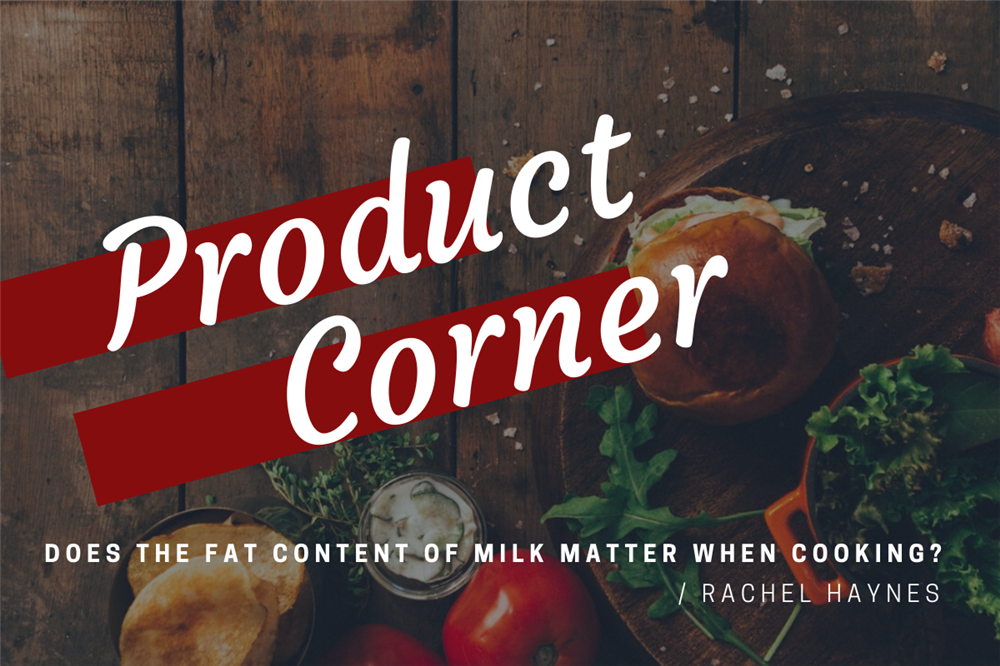Product Corner: Does the Fat Content of Milk Matter When Cooking?

Welcome to our series, Product Corner, where each month our Product Manager, Rachel Haynes, will cover a food-focused topic. The series will feature everything from kitchen tips and food myths to the inside scoop on favorite products. (And that’s just a quick taste of what to expect!)
-
If you’ve ever been about to start a recipe, and suddenly realized you didn't have the type of milk your recipe called for, this post is for you.
You might be wondering why does the milkfat even matter in a recipe? And is there any wiggle room? It really comes down to the recipe and how dependent it is on fat. That leads us to our next question, what exactly does fat do when you're cooking?
- It's a flavor carrier. Fat absorbs and holds on to flavors, which is one of the reasons why we use oils to preserve the flavors of herbs and spices through infusion.
- It prevents gluten from forming in baked goods. To spare you the details, fat keeps long strands of gluten from forming. While long strands of gluten are good in baked goods like bread, short strands are better for pie crusts, biscuits, and cakes. The shorter strands allow for flakier, more tender textures.
- Emulsification! Without fats, those gravies and cheese sauces wouldn't stick together.
- Texture also relies on fat. As we mentioned before, fat stops gluten from forming in baked goods, which yields a tender texture. It's also responsible for the creaminess in ice cream, mayonnaise, and whipped cream.
In other words, fat truly matters when it comes to baking and emulsifying. For instance, using skim milk in a cheese sauce for macaroni and cheese may cause it to separate, but using it to make creamy tomato soup will still work. (It just won't have the same mouthfeel.)
But what if the recipe calls for whole milk, and you only have 2% on hand? Don’t worry, it will still work. Some fat is better than none at all, in most situations. But I wouldn't try to make whipped cream with 2% milk any time soon!
-
About Rachel Haynes
Rachel joined the Smith Brothers Farms IT department, but made the switch in 2018 to marketing when the opportunity became available to do all the things she loves outside of work: cook, eat, photography, and learn about food. Now she’s in charge of determining what great products to bring on next. Additionally, Rachel leads our recipe development, focusing on fresh, local ingredients and simple preparation. She enjoys creating dishes that inspire readers to try new ingredients and cooking methods.


Our first milk Tedd. Brought us a free gallon and the kids loved and so did i... also started ordering your eggs..it all made my baking so much better andmy kids loved it..in fact one of my children went to college and came home for the weekend and told me how horrible the milk was there..so she was glad to have yours..just thought you should know..
I trust your products.
In answer to the question about melted butter being added to a recipe to bring the milk fat up from 2% milk, that is correct. You can look up the ratios online to make half-and-half out of heavy cream and the various fat levels of milk and how make 2% milk into whole milk by adding butter or heavy cream, etc.